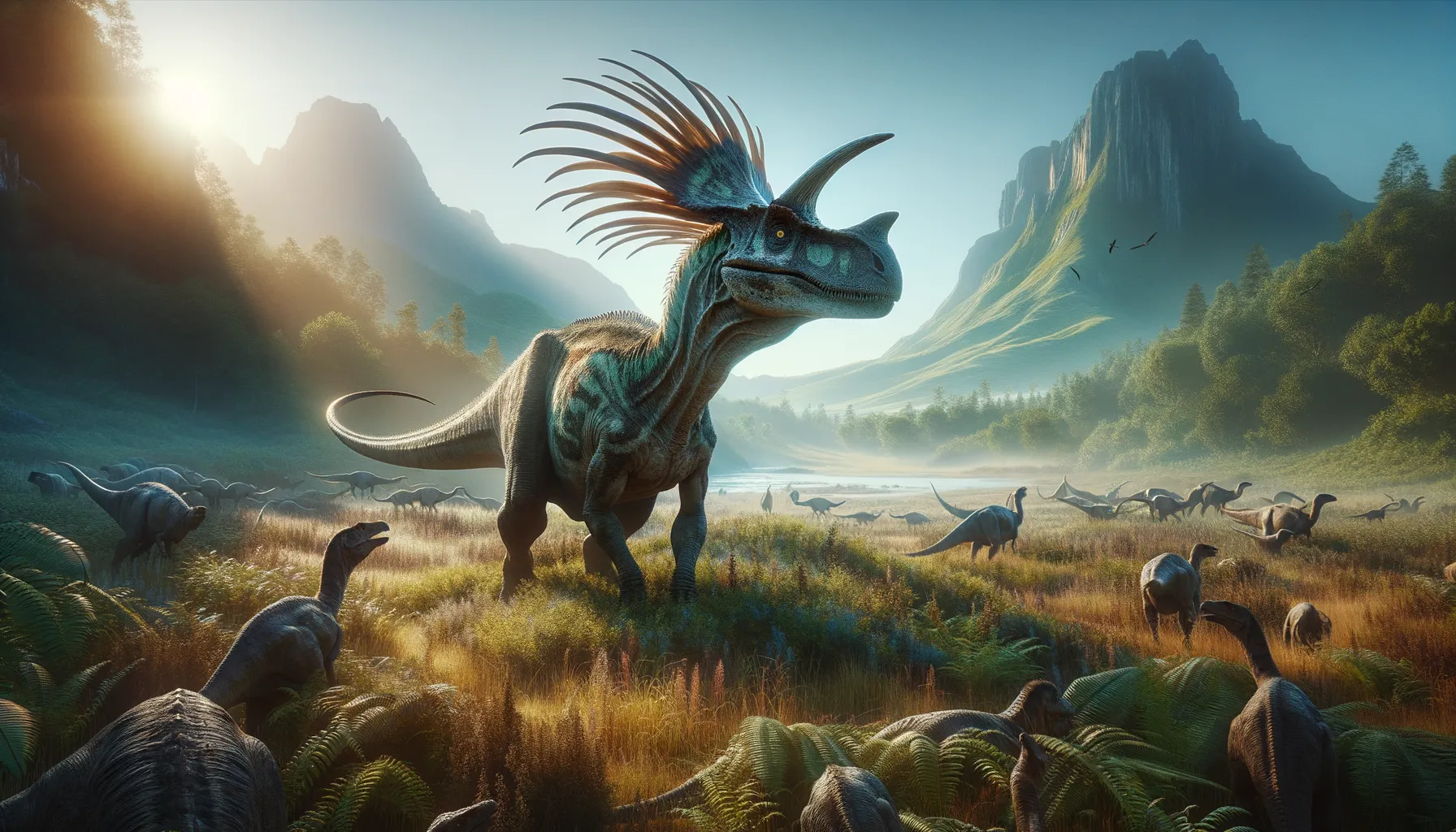
Dilophosaurus
Double-crested ancient predator.
Period
Jurassic
Length
Around 20 feet long.
Height
Roughly 5 to 7 feet tall at the hips.
Weight
Approximately 880 pounds.
Dilophosaurus was an early Jurassic predator known for its distinctive double-crested head. These crests may have been used for display or other social interactions. It had a slender, agile build, suggesting it could be a swift runner. This dinosaur is one of the oldest theropods known, offering valuable insights into the evolution of carnivorous dinosaurs. Its fossil discovery in North America helps paint a picture of prehistoric life on this continent during the early Jurassic period.
Diet
Dilophosaurus was carnivorous, likely preying on smaller vertebrates and scavenging larger carcasses. Its diet potentially included fish and small to medium-sized animals, using its agility and speed to hunt.
Hunting
It likely employed swift tactics to catch prey, using surprise and speed to its advantage. Its lightweight frame suggests it was built for quick movements rather than intense physical combat.
Environmental challenges
During its time, shifting climates and geological changes were significant challenges. Variations in temperature and humidity would have impacted food availability and habitat conditions. Predators and competition for resources also posed consistent survival challenges.
Speed
Moderate, with estimates suggesting up to 20 mph.
Lifespan
Estimated around 20 years.
First discovery
Discovered in the 1940s in Arizona, USA.
Fun Facts
- Dilophosaurus lived around 193 million years ago during the Early Jurassic period.
- It is known for the two distinctive crests on its head, which may have been used for display or attracting mates.
- Dilophosaurus was one of the largest land animals of its time, growing up to 20 feet in length.
- Despite its portrayal in movies, there's no evidence that Dilophosaurus could spit venom or had a neck frill.
- Fossils of Dilophosaurus have been found primarily in the southwestern United States.
- Its name means 'double-crested lizard,' reflecting the crest structures on its skull.
- Scientists believe Dilophosaurus was a fast and agile predator, capable of hunting smaller dinosaurs and other prey.
Growth and Development
Dilophosaurus likely followed a rapid growth trajectory similar to modern birds. Young Dilophosaurus relied on their speed and agility to survive, maturing quickly to reach full size within a few years to fend for themselves.
Habitat
It lived in what is now North America, in a landscape likely dominated by rivers, lakes, and forests. This environment provided diverse hunting opportunities and relative protection from larger predators or competition.
Interaction with other species
Dilophosaurus might have encountered and competed with other contemporary predators. Its distinctive crests could have been used for display to establish dominance or deter rivals.
Natural lifespan
Its natural lifespan was likely around two decades.
Reproduction
Like most dinosaurs, it likely reproduced by laying eggs. The reproductive strategy might have involved nesting in concealed locations to avoid predation and ensure egg survival.
Social behaviour
Dilophosaurus may have lived solitary or in small groups, using its crests for social interactions such as mating displays or establishing dominance within a group. Communication through visual signals might have been favored.
Fossil locations
Fossils primarily found in the southwestern United States, particularly Arizona, have provided significant insights into its morphology and lifestyle. These finds have been critical in understanding the early evolutionary stages of theropod dinosaurs.
